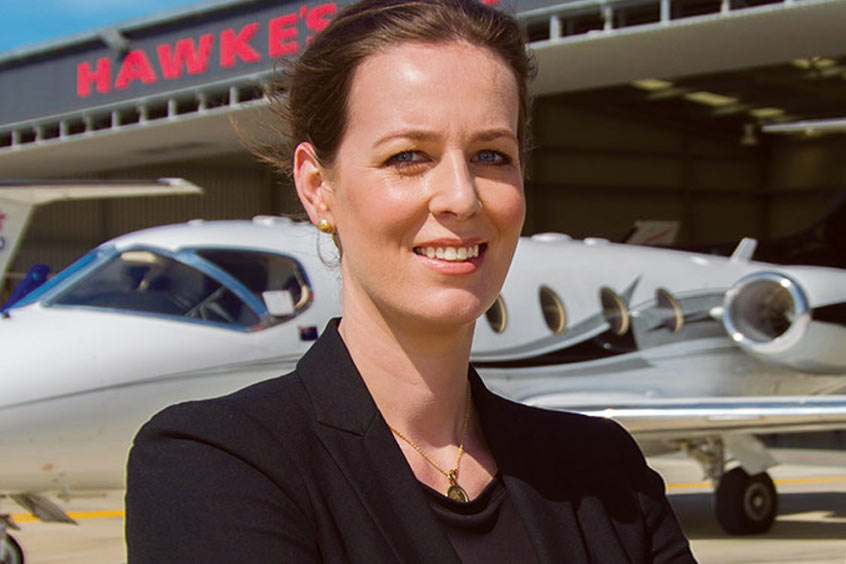ACE 2026 - The home of global charter.
 The bimonthly news publication for aviation professionals.
The bimonthly news publication for aviation professionals.

New Zealand's Skyline Aviation has been using its Sovereign and Nextant jets to respond to medical emergencies during the ongoing pandemic. While the hit to tourism due to COVID affected medical retrievals in the region, urgent cases still needed to be completed to save lives.
“With countries responding to the pandemic by shutting down borders to keep their communities safe from the disease, it quickly became clear what impact COVID could have for our international patients requiring acute treatment in New Zealand,” director Annabel Toogood explains. “Our team of medical directors and senior management immediately began discussions with South Pacific government ministries along with the New Zealand Ministry of Health to establish the best protocols to continue our life saving service and keep our team and patients safe. Having long standing relationships with the Pacific Islands hospitals and governments helped us quickly gain the confidence and cooperation of all parties involved. Our greatest challenge is planning and logistics, for which we have a dedicated team of mission controllers who provide us with 24-hour coverage, seven days a week.”
When a medical evacuation tasking comes into mission control (MC) at Skyline, the lead time may only be a few hours. The pilots commence with flight planning and inform MC about the route, flight times and if any fuel stops are required. The doctor and flight nurses receive the medical notes and contact the treating doctor for a comprehensive handover of the patient condition and then prepare the medical equipment required for the transport. All crew require a pre-flight COVID test to be conducted. MC arranges for health and flight permits to be in place and the receiving hospital to be prepared for Skyline's arrival.
“We can be ready in as little as three hours with the majority of flights departing within 24 hours of the first enquiry,” remarks Katrina Wright, manager of mission control. “Knowing who to call and having the business relation already in place is essential as the pandemic has created many additional steps in planning and dispatching a retrieval.”
Stuart Clyde, an Auckland-based Skyline Nextant captain, adds: “Flying and wearing PPE adds an interesting dynamic in a small jet, and it takes some skill not to let your glasses fog up.”
On arrival at the destination a carefully choreographed customs, immigration and patient handover protocol takes place. Flight documents are placed on a table or spot on the ground by the crew, who step back to allow the authorities to step forward to receive the paperwork while maintaining physical distancing. The process may be repeated several times before the rest of the crew are able to disembark the aircraft. All foreign patients, medical teams and crew are considered as potential COVID-19 cases regardless of country of origin and therefore all crew from both sides will have donned full PPE, including gowns, gloves, goggles or shields and face masks, and will adhere to two-metre physical distancing rules where possible.
Medical teams from Skyline's New Zealand Air Ambulance (NZAAS) division are facing the added challenge of being required to receive handover, assume patient care and perform interventions for many of the Pacific Island facilities outside of the hospital environment. This is most often on a tarmac or in an ambulance and will often be regardless of the clinical condition of the patient, some of whom may be complex and critically unwell, requiring respiratory and haemodynamic support. Not only does this add complexity to a basic patient assessment due to the design of transport stretchers and transport platforms but this can also occur under any environmental condition. Skyline teams will be in full PPE in high humidity, tropical rain and winds and with outside noise that may be from other aircraft departing or arriving. “Although we acknowledge that tarmac transfers are not the NZAAS standard practice and these environmental conditions have the potential to pose unwanted distractions and intricacies, the changes have been forced upon us by the COVID-19 pandemic, and we must observe any border and health guidance that is enforced by the countries that we are landing in,” Toogood continues. “NZAAS teams work in collaboration with referral and receiving facilities from acceptance to completion of mission to ensure that any potential complications are considered and in the most part mitigated by keeping open lines of communication and discussing treatment and transport planning requirements with the referral teams. This may be as simple as ensuring the patient arrives at the aircraft with medications, discharge letters and a passport."
With hand-over complete and the patient and family members on board, the return flight to Australia or New Zealand usually takes three to four hours. Similar protocols are applied on arrival with all crew subject to two post-flight COVID tests.
“Experience and expertise, working as a team and communication are key to our success,” Toogood concludes. “While we hope vaccines will bring much relief to our business, the lessons learned will stay with us as we move from COVID as a pandemic to it being endemic.”